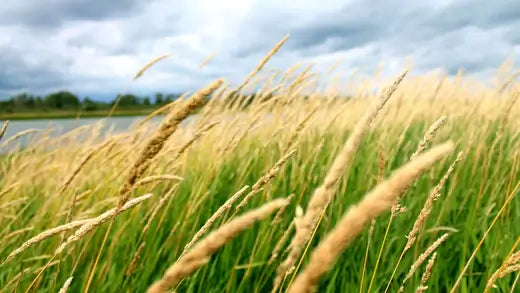A hay-scented fern is a deciduous tree with green, lacy fronds that change to soft yellow in the fall. They smell like freshly cut Hay when crushed, brushed, or smashed. It is a North American native. It is widespread in open woodlands and wooded banks in the midwestern and eastern United States.
Hay-Scented Ferns are frequent in Pennsylvania forests. It is best to let them naturally grow in woodland areas to clean the forest floor.
You can also use it in places where the shade is dense and dry. Saline soil makes it difficult for other plants to thrive. This plant will thrive. Also, given constant humidity, it can tolerate the full sun for so long. Gardeners love the plant for its easy maintenance and delicious scent that reminds you of freshly picked Hay's familiar, slightly grassy smell.
They can flourish in all soil types that range from dry and rocky woodlands to dense, moist hardwood forests. The primary thing to take into consideration is not soil condition but the quality of water. Like most ferns' scent of Hay, it remains consistently moist without getting too wet or dry. Apart from paying attention to the soil's moisture content, The requirements for maintaining this species are shallow.
Their delicate appearance
Dennstaedtia punctilobula can look pretty; do not let that fool you. The ferns' tiny size is sturdy despite their small dimensions. The gorgeous golden-brown stems effortlessly hold the spring-like, fresh green fronds which create the triangular shape.
Each frond is adorned with bright leaflets that are large at the bottom and sharpened to form a sharp tip towards the end. The frond's texture is appealing, hair-like look. The plant can reach an average height of fewer than two feet but can spread to up to four feet. This growth pattern makes it a great ground plant or specimen in your garden.
Hay-scented Fern is a favorite in shady areas; however, it can tolerate full sun provided the soils are damp. Although grounds with rich, fertile soils are the best, these ferns can endure rocky, poor, and dry, saline soils.
Plants that are established and well-established are more resilient than those that are young. The ferns are quickly spreading and quickly form colonies.
A few severe diseases or insect problems could threaten the hay-scented fern. Leaf scorch can cause leaves to fall at summer's peak.
Hay-Scented Ferns will form a colony and spread quickly into a thick ground cover. The plant is an ideal ground cover for areas not planned to mow or maintained. However, it can also be invasive and is recommended to be planted far from cultivated landscape plants. The plant has a solid and dense underground root structure, which helps keep soil from eroding. This plant is tough and will thrive on its own once stabilized.
Large, bright green fronds provide the appearance of a carpet of texture as the plant colony gets established. Ferns with a scent of Hay provide an attractive architectural aspect to the panorama. It is deciduous, dropping numerous tiny leaves in the fall and returning in full beauty in the spring.
Deer are not fond of the smell of Hay and ferns; therefore, they can be employed as a deterrent in zones where deer aren't welcome. Pests, insects, and other woodland animals can also dislike the smell and taste of ferns with the scent of Hay. They typically are absent in the areas where these ferns flourish.
The Hay-scented fern is a lovely fern to plant around your home. Leaves of the fern transform to a greenish-yellow or green hue. The plant grows slowly in the shade but will increase in moist soil in full sun. Deer's also use the plant to protect themselves when lying down, so it could draw deer to your house. The fern can be planted everywhere in the backyard, the natural area, or in a hanging container.
These ferns flourish by themselves after they are established. Plant bare-root ferns into the soil in which compost is added. The ferns are durable and can be tolerant. However, to start a colony that will develop, you must work to incorporate compost before planting to ensure proper drainage. When the hay-scented ferns are established, they won't require additional care.
Uses of Hay-Scented Fern
The hay-scented fern is one of the most popular and versatile plants for adding texture to shade gardens. Its long, lacy fronds create an exciting contrast when planted alongside traditional groundcovers like vinca or pachysandra. Its bright green foliage provides color in darker areas, while its delicate fragrance adds a unique and inviting touch.
The hay-scented fern is also deer resistant, making it an excellent choice for gardens in areas with high deer populations. Its drought tolerance makes it an easy-care addition to any shade garden - once established, the fern requires very little maintenance or water. With its beautiful form and fragrant aroma, the Hay-scented fern is a great way to add an elegant touch to any shade garden.
The delicate scent and lacy appearance, the narrow triangular form, and the minimal maintenance required of the plant in terms of work and time, as well as the simplicity of landscape design, borders, and natural ground cover, all contribute to the beauty of this plant. There's nothing not to be admired in this plant.
It is fantastic to create a central point in your garden, be it the shade or cottage garden. It's also great for the ground to provide shade and sun, is a large area quickly, lasts for at least ten years, and earns marks in my guide. It's also resistant to disease and inexpensive but still retains its distinctive appearance.
Planting Hay-Scented Fern
The fern's scent is heavenly in an area of shade with low-maintenance leaves after about two or three years in almost any soil. It is best not to add it to a permanent shade-loving perennial garden that includes hosta, astilbe, and other perennials that love the shade. It will soon take over these less invasive plants.
Hay-Scented Fern Care
The fern with a scent of Hay thrives best in full to partial shade and in moist, organically abundant soil. It is a plant that can be adapted and tolerant of rocky, weak, and dry soil once established. The fern is spread aggressively through Rhizomes that form dense colonies.
Plant a hay-scented fern in the springtime. It is a fast-growing plant, So plant a few ferns at least 18 inches from each other. After planting, water the plants thoroughly and continue to water them each week for the first season. Spread a 2-inch thick mulch covering on the plant's base to stop soil water loss. After the growing season, or at the beginning of spring, cut the fronds back to the ground.
Please use a spade with a sharp edge to divide the perennial at any time throughout the growing season; however, early spring is the best time to do it. Replant the fronds, and then water thoroughly.

















































